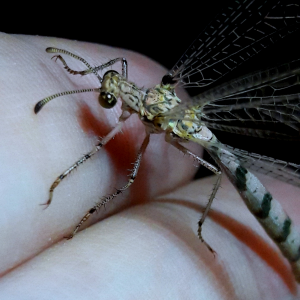-
Are you a Tarantula hobbyist? If so, we invite you to join our community! Once you join you'll be able to post messages, upload pictures of your pets and enclosures and chat with other Tarantula enthusiasts. Sign up today!
You are using an out of date browser. It may not display this or other websites correctly.
You should upgrade or use an alternative browser.
You should upgrade or use an alternative browser.
neuroptera
-

Vella fallax texanus- Texas Giant Antlion
Shot on hand showing just how big these are.- MBullock
- Media item
- acanthiclisini giant antlions neuroptera
- Comments: 0
- Album: Hexapoda
-

Unknown Brachynemurini closeup
Interesting banding seems unique.- MBullock
- Media item
- antlions brachynemurini long-tailed antlions neuroptera
- Comments: 0
- Album: Hexapoda
-

Unknown Brachynemurini (long-tailed antlion) Female
Unusual species, i couldnt find anything to help ID. Males have extremely long tails compared to females.- MBullock
- Media item
- antlions brachynemurini long-tailed antlions neuroptera
- Comments: 0
- Album: Hexapoda
-

Pit-Building antlion- Myrmeleon sp
Unknown (possibly undescribed) species of Myrmeleon with an interesting blue tinge.- MBullock
- Media item
- antlion myrmeleon neuroptera
- Comments: 0
- Album: Hexapoda
-

Vella fallax texana
A very large antlion species with a wingspan over 4" Larvae do not build pits, making them extremely difficult to collect. contrary to popular belief, adults DO eat, and are PREDATORY- not pollen and nectar feeders.- MBullock
- Media item
- antlions giant antlion neuroptera vella fallax texanus
- Comments: 1
- Album: Hexapoda
-

Myrmeleon mexicanus
Mexican pit-building ant-lion Unknown instar but close to fully-grown. Will create a sand-cocoon to pupate.- MBullock
- Media item
- ant-lion larva myrmeleon mexicanus neuroptera
- Comments: 0
- Album: Hexapoda